Chapter 4
Searching LinkedIn
In This Chapter
![]() Viewing your LinkedIn connections
Viewing your LinkedIn connections
![]() Searching your network
Searching your network
![]() Sorting your search results
Sorting your search results
![]() Using criteria in your search
Using criteria in your search
![]() Performing a reference search on somebody
Performing a reference search on somebody
After you sign up for LinkedIn and build your profile (see Chapters 2 and 3, respectively, for more on those topics), it's time to go forth and find connections! As you start searching your own immediate network of your first-degree connections, plus second- and third-degree network members, you can see just how valuable LinkedIn can be to you. LinkedIn is the embodiment of the Six Degrees of Separation concept because in most cases, you can connect to any other person in the network regardless of whether you already know that person.
In this chapter, I demonstrate the different ways you can search the LinkedIn network. By that I mean your ever-growing personal network and the greater LinkedIn member network. I talk about viewing your own network, searching within the second and third levels of your network, and performing searches on LinkedIn using different types of criteria or search terms.
Viewing Your Connections
I recall an old saying: “You have to know where you have come from to know where you are going.” This holds true even for LinkedIn. Before you start searching throughout the network, it's helpful to understand the reach of your own immediate network and how your first-degree connections’ networks add up to keep you connected with a lot of people. The first thing you should do is get familiar with your own LinkedIn network.
To view your LinkedIn network and also some nifty statistics about your network, just follow these steps:
- Log in to LinkedIn. From the top navigation bar, hover your mouse over the Network link and then click the Contacts link that appears.
This brings up a list of your current connections on the Contacts page, as shown in Figure 4-1. You can scroll through the list or hover your mouse over the Sort By link and then click the Last Name option (located below the tiled bar of potential contacts) to sort the list of connections in an alphabetical order.
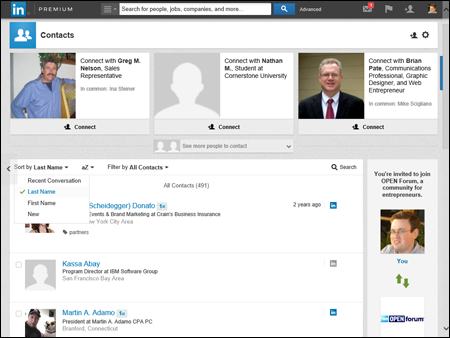
Figure 4-1: Sort your connections by last name.
- Use the search box and drop-down arrow next to the Filter By link in the middle of the screen to filter your list of connections.
Enter any keyword into the search box or use one of the predefined filters (Tags, Companies, Locations, Industries, and Recent Activity) to display connections who, say, live in a greater metropolitan area of a certain city or work in a particular industry. You can also click the Advanced link at the top of the page to bring up all the filtering options.
 The drop-down lists contain options only for your first-degree connections.
The drop-down lists contain options only for your first-degree connections.Suppose you're looking for Internet professionals. After clicking the Advanced link at the top of the page, you simply expand the Industry filter by clicking the triangle next to Industry (as shown in Figure 4-2) and then clicking Internet. LinkedIn can show you who in your network matches that request! If you're looking for an option in any of these filter lists (like Austin, TX, as a location) that doesn't appear on the filter list, none of your first-degree connections have that option defined in their profiles. (In this case, it would mean that none of your first-degree connections reside in Austin.)

Figure 4-2: Generate a targeted list of your connections based on a filter.
- Expand the Locations filter (as shown in Figure 4-3) to see a breakdown of where the folks in your network are located.
LinkedIn shows you the numerical breakdown of which regions are the most popular in your network.
 Click any region on this list, and LinkedIn automatically performs a search of your network with that criteria. So, to see your first-degree connections who live in the greater New York City area, click the Greater New York City Area link in the Locations list.
Click any region on this list, and LinkedIn automatically performs a search of your network with that criteria. So, to see your first-degree connections who live in the greater New York City area, click the Greater New York City Area link in the Locations list.
Figure 4-3: See the region and industry breakdown of your network.
Searching the LinkedIn Network
When you're ready to find a specific person, use the LinkedIn search engine, with which you can scan the tens of millions of LinkedIn members, based on keywords. The two main ways to search the network are a basic search and an Advanced Search.
At the top of every page on LinkedIn is a simple search box, with which you can run a keyword search via the LinkedIn database. This is your go-to tool if you're searching for a specific name, employees of a particular company, or people with a specific job title. In fact, you'll get a lot of results with the basic search because you're searching each LinkedIn member's entire profile for your keywords, not just one field. For example, if you type Mike Jones in the basic search box (as opposed to searching by the name Mike Jones; see the upcoming section, “Searching by name”), you get a larger set of results because you see every profile where the words “Mike” and “Jones” were anywhere in the profile. (When you search by name, LinkedIn searches only everyone's Name field.) Keep this in mind when you do your search, and pick the method you want based on your goals.
In some situations, though, a simple search just doesn't cut it because you want to specify whether you're searching for someone's name, title, employer, industry, skills, location, or some combination thereof. In those cases, use the Advanced Search function:
- From almost any page on LinkedIn, click the Advanced link at the top of the page to bring up the search page. If you're using LinkedIn Jobs or LinkedIn Groups, clicking this link brings up the Job Search or Groups search page, respectively. In addition, on the Job Search page, for example, there is an Advanced Search link below the job search text box that expands and shows filters for searching jobs.
- Click the drop-down arrow next to the search box at the top of any LinkedIn page to bring up links to the Advanced searches for People, Jobs, Companies, Groups, Universities, or your messages Inbox, as shown in Figure 4-4.
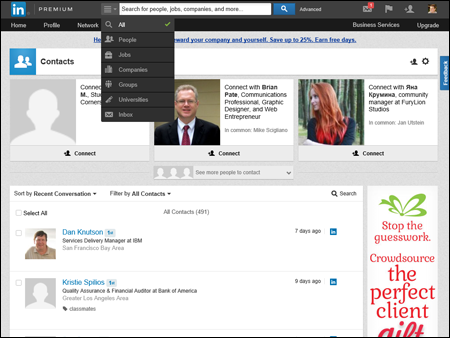
Figure 4-4: Access the LinkedIn search page from one of several links.
- If you download the companion software (as discussed in Chapter 10), you can perform a search from the search box in that software program.
Searching by keyword
Quick, do you know someone who can write software code in PHP? Who do you know that enjoys mountain climbing or hiking? Do you know anybody who gives presentations on a regular basis? Well, with LinkedIn's search capabilities, you can find out when you search by keyword.
When you search by keyword, LinkedIn analyzes everyone else's profiles to find that matching word. You can put any sort of skill, buzzword, interest, or other keyword that would be present in someone's profile to see who in your network is a match. To search by keyword, just follow these steps:
- While logged in to LinkedIn, click the Advanced link at the top of the page.
You're taken to the Advanced People Search page.
- Enter the keyword(s) in the Keywords text box.
In Figure 4-5, I'm searching for “Six Sigma”. If you enter multiple keywords like I did, LinkedIn looks for members who have all the keywords in their profile.
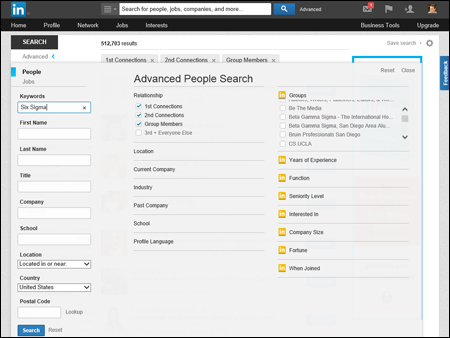
Figure 4-5: Search for people by the keywords in their profile.
 I recommend tacking on additional search criteria, such as picking one or more industries, location information (country and ZIP/postal code), or perhaps a job title to get a more meaningful search result. Otherwise, your result list will be long and unhelpful.
I recommend tacking on additional search criteria, such as picking one or more industries, location information (country and ZIP/postal code), or perhaps a job title to get a more meaningful search result. Otherwise, your result list will be long and unhelpful. If you're searching for a specific keyword phrase, put those words in quotation marks so LinkedIn searches for the exact phrase; for example, “Six Sigma”. Otherwise, LinkedIn searches each individual word, and you might get a result like mine in Figure 4-6, where I have the words “six” and “Sigma” in different places in my profile. (Although it's not visible in the figure, I have the word “Sigma” as a keyword in my profile because I'm a member of Beta Gamma Sigma.) Because LinkedIn found both words in my profile, even though those words didn't appear together in one phrase, I came up on the search results page.
If you're searching for a specific keyword phrase, put those words in quotation marks so LinkedIn searches for the exact phrase; for example, “Six Sigma”. Otherwise, LinkedIn searches each individual word, and you might get a result like mine in Figure 4-6, where I have the words “six” and “Sigma” in different places in my profile. (Although it's not visible in the figure, I have the word “Sigma” as a keyword in my profile because I'm a member of Beta Gamma Sigma.) Because LinkedIn found both words in my profile, even though those words didn't appear together in one phrase, I came up on the search results page.
Figure 4-6: Enclose keyword phrases in quotes.
- Click the blue Search button.
You see the people in your extended network with those keywords in their profile.
- (Optional ) Fine-tune your results with the filtering options.
You can expand the various filters along the left side of the Search Results screen and use them to refine your results by entering more information, such as keywords, job titles, user types, and location information, by selecting the check boxes provided. (See Figure 4-7.) As you select each filter, LinkedIn automatically updates the search results to give you a more precise search that narrows down the list. As of this writing, you can filter by Relationship (degree of connection), Location, Current Company (of the people you're searching), Industry, Past Company, School, Profile Language, LinkedIn Group membership, Years of Experience, Seniority Level, Interests, Company Size, and several more options.
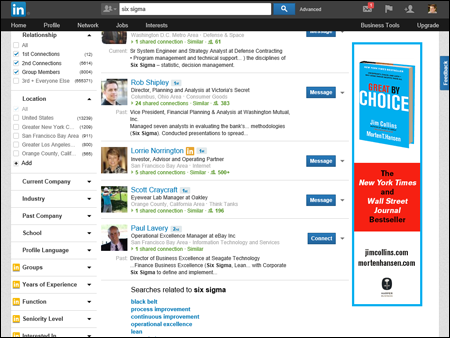
Figure 4-7: Add more information to get a more targeted list of matching people.
Searching by name
When you want to find a specific person on LinkedIn, you can search by name. LinkedIn has developed special First and Last Name Search fields to help you find that person. When you search by name, you are required to enter the last name; entering the first name is optional.
When you're ready to search by name, just follow these steps:
- While logged in to LinkedIn, click the Advanced link at the top of the page.
You're taken to the Advanced People Search page.
- Enter the last name (and first name, if you know it) into the Last Name and First Name text boxes. (See Figure 4-8.)
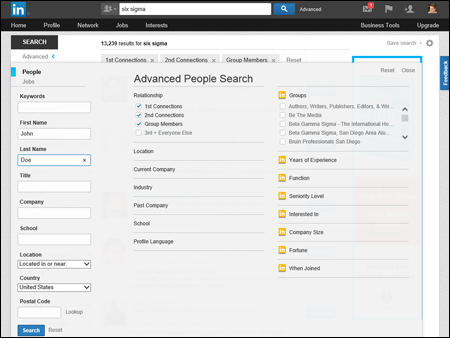
Figure 4-8: Search LinkedIn by someone's name.
- (Optional ) Input additional information to help find the person you're looking for.
If you know a company where the person used to work or is currently employed, you can input a company name into the Company text box.
- (Optional ) If you know the approximate location of this person, use the Location drop-down list to select the Located In or Near option. Then use the Country drop-down list and fill in the Postal Code text box.
 Only after you select Located In or Near can you pick a country from the Country drop-down list and input a ZIP code in the box indicated, as shown in Figure 4-9.
Only after you select Located In or Near can you pick a country from the Country drop-down list and input a ZIP code in the box indicated, as shown in Figure 4-9.
Figure 4-9: Give LinkedIn location information to find your person.
- Click the Search button.
You see a results list of people, sorted by the relevance of your name search and then by the degrees of connection in your overall LinkedIn network. (For example, people who are second-degree network members appear above people who are third-degree network members.)
- (Optional) For better results, use filters in your search.
If you haven't already done so, you can add more keywords, a company name, or location information into the boxes provided on the left side of the Search Results screen. Then click the Search button. Also, you can scroll down and pick specific filters to refine your search results.
Searching by company
Sometimes, you might need to search by company. Maybe you're thinking of applying to a company, and you want to see who you know (or, rather, who is in your extended network) who works for that company so you can approach them to ask some questions or get a referral. Perhaps you're looking for a decision maker at a company who can help you with a deal, or you're curious how active a particular company's employees are on LinkedIn. You can also look for key thought leaders whom you might want to approach for an informational interview.
Whatever the reason, LinkedIn is an excellent place for searching detailed corporate profiles of specific companies. When you're ready to search by company, just follow these steps:
- While logged in to LinkedIn, click the Advanced link at the top of the page.
You're taken to the Advanced People Search page.
- Enter the name of the company in the Company text box (as shown in Figure 4-10).
If you want to search for only current employees of the company, change the drop-down list choice from the Current or Past option to just Current. If you don't change the default option, your search results will include all the people who ever worked for that company and included that job on their LinkedIn profiles.
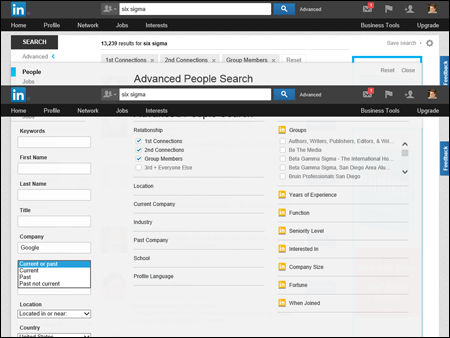
Figure 4-10: Search for people by the company where they work(ed).
- Click the Search button.
You see as many as 100 results that match your company and exist somewhere in your extended network. (If you've paid for a premium account, you see more results, depending on the level of your account.)
- (Optional) For better results, modify your search.
You can enter more information, such as job titles, user types, or location information, into the boxes provided on the left side of the Search Results screen. Then click the Search button. Also, you can scroll down and pick specific filters to refine your search results.
Searching by job title
Sometimes you might need to look for someone in a specific position rather than for a specific person. After all, who knows what you go through better than other people with the same job, right? Who better to give advice on a topic like search engine optimization (SEO) than someone whose job relates to SEO?
Therefore, LinkedIn gives you the ability to search by job title instead of person. When you're ready to search by job title, just follow these steps:
- While logged in to LinkedIn, click the Advanced link at the top of the page.
You're taken to the Advanced People Search page.
- Enter the job title in the Title box provided; Figure 4-11 shows Project Manager entered.
To search for only those people who currently have that title, change the drop-down list choice to Current. If you leave the default choice of Current or Past, your search results will include all the people who have ever defined that job title in one of the positions on their LinkedIn profiles.
- (Optional, but do it anyway if you can.) Select at least one Industry from the list provided so your search results are relevant to the job title search.
I highly recommend doing this step. After all, a Project Manager in Construction is completely different from a Project Manager in Computer Software. Click the word “Industry” in the center of the screen to bring up the list of industries you can select from.
 You can actually select multiple industries from the list. Simply scroll through the list and select the check box next to each industry you want to select.
You can actually select multiple industries from the list. Simply scroll through the list and select the check box next to each industry you want to select. - Click the Search button to see your results.
You see a set of results that match your job title request. You can use the filtering options on the left side of the Search Results screen and the middle of the screen, as shown in Figure 4-11, to add more information and get a more targeted list.
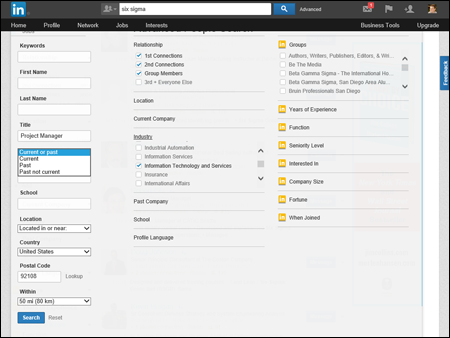
Figure 4-11: Search for people by their current or previous job titles.
Performing a reference search
One of the benefits of being a LinkedIn premium member is that you can search for someone who might have worked with someone you're researching. Perhaps you're about to hire someone but would like to speak with someone else who knows your potential candidate because they worked together. Say you're deciding to hire a consultant for a project but want to contact someone who has hired this consultant in the past to get a better idea of his work quality. Or maybe you're about to enter a business deal and want some information from someone who knows your potential new partner.
LinkedIn has created the reference search to give their premium users a better window into the person or company. All you need is the company name and the range of years someone has worked there, and LinkedIn searches your network and shows you the people who match that search and how closely they're connected to you.
To perform a reference search, just follow these steps:
- Click the word “Advanced” at the top right of the LinkedIn home page next to the search box.
You're taken to the Advanced People Search page.
- Click the cog near the top right of the page (next to the Save Search link) to bring up a drop-down list, then select Reference Search.
The Reference Search page is shown in Figure 4-12.
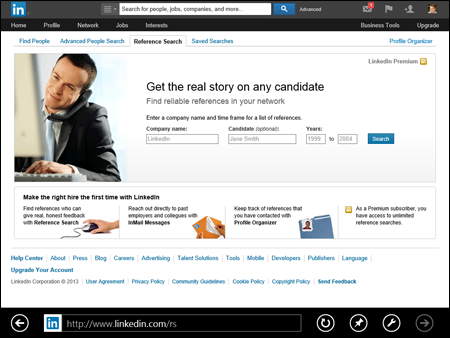
Figure 4-12: Search LinkedIn for potential references for someone.
- Enter the name of the company and a date range.
For example, suppose you have a job candidate who claims to have worked for Top Cow Productions from 2000 to 2002. You would enter that company name and date range into the text boxes provided.
- Click the Search button.
If you have the basic account, you see a Summary page like the one shown in Figure 4-13. This gives you an idea of how many potential connections exist and how many are available through LinkedIn's InMail system (see Chapter 5 for more information about InMail). If you have a premium account, you would see a list of people (like in a name or job title search) who worked at the designated company in that timeframe (as shown in Figure 4-14), and you'd have the ability to contact them. (For more on the different account types, take a gander at Chapter 1.)

Figure 4-13: Get an idea of how connected you are to potential references.
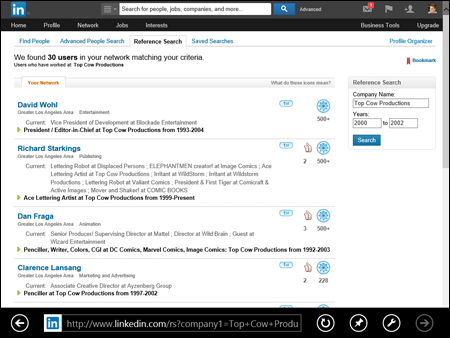
Figure 4-14: With a premium account, find exactly who can help you verify a reference.
